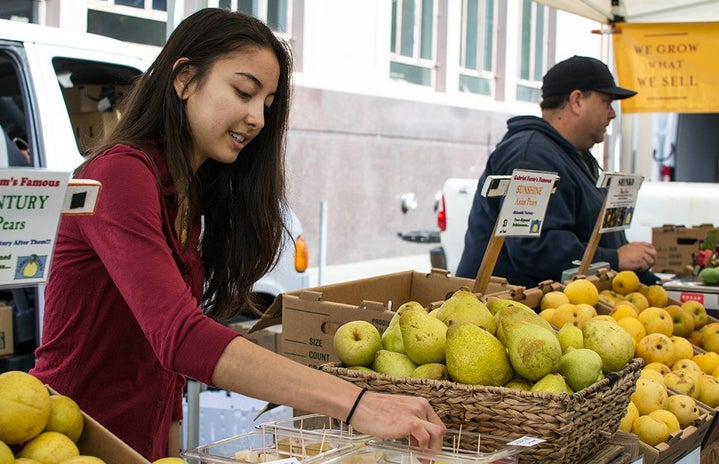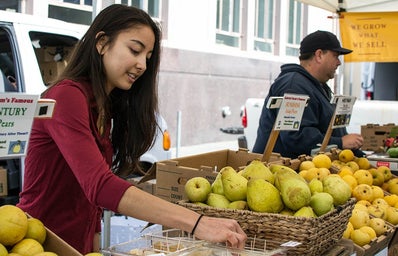When people think of climate change, many people imagine the coal-burning power plants and toxic vehicle fumes, not the food on their dinner plate. However, that food – where it comes from, what type of food it is, and how much is wasted – might be contributing more greenhouse gas emissions than your car.
The food we eat matters a lot when creating a sustainable world because so much of our land and resources are invested in growing it. We all need food and as the world population continues to grow, we need to produce even more of it. In order for this to happen without destroying the planet, we have to make some better food choices.
So, how do we make better choices?
We can begin by eating less meat. You have probably heard about the benefits of eating a plant-based diet. It is better for your health and it is better for the environment, but why?
It has to do with the resources that go into producing meat in comparison to producing vegetables. In order for us to put meat on our plate, not only do we have to use land and water to raise the animal, but we also have to use land and water to grow the plants needed to feed the animal. This results in a lot more resources – labor, water, and plants – going into producing meat than plants alone. By eating less meat, we are directly eating the plants and skipping out on the resources needed to raise the animal. Thus, those resources are conserved and emissions are cut.
In addition, while the agriculture industry as a whole makes up about a quarter of global greenhouse gas emissions, the livestock sector alone contributes about 14.5% of global emissions. If we consume less livestock, we could reduce that contribution.
It is important to recognize, however, that not everyone can (or has to) become vegetarian or vegan. Eating a plant-based diet still contributes to agricultural emissions, deforestation and pollution because of the way modern agriculture works.
So how do we go about choosing more sustainable foods, including meat?
Just like a lot of environmental topics, the answer is complex, but there are a few things you can do to help make the food you eat a little more sustainable. First, try to shop the perimeter of the store. The further you venture inside, the more processed the food tends to get, which means the more resources and emissions were put into that food. Plus, eating from the perimeter is healthier too!
When grocery shopping, it’s important to read the labels. There are a lot of different food labels and it’s difficult to know what-is-what especially when companies use their own made-up labels to sell their product. Before your next shopping trip, check out what the food labels really mean to help yourself shop the most environmentally-friendly foods.
Lastly, buy less food in general. Food waste is a really big problem, especially in the U.S. Americans waste 133 billion pounds of available food each year, which means we also wasted all of the resources put into that food. Planning out your meals and sticking to your grocery list can help you buy the right amount of food. When the food gets home, you can try freezing leftovers and starting with small portions so that you don’t waste on your plate.
All in all, what matters most is your awareness. Being aware of the different labels and the different resources that go into certain foods makes a big difference for how you shop. It is a long learning process, but the fruits of the labor are worth it. It’s all about the baby steps!
Happy munching!


